On April 12, the US Department of Labor released data showing that the monthly rate of CPI in March increased by 0.1%, which was lower than the expected growth of 0.2% and the previous value increased by 0.4%;
The annual rate of growth was 5%, which was lower than the expected growth of 5.2%, and the previous value increased by 6.00%; The core CPI grew at an annual rate of 5.6%, which was in line with expectations, and the previous value increased by 5.5%.
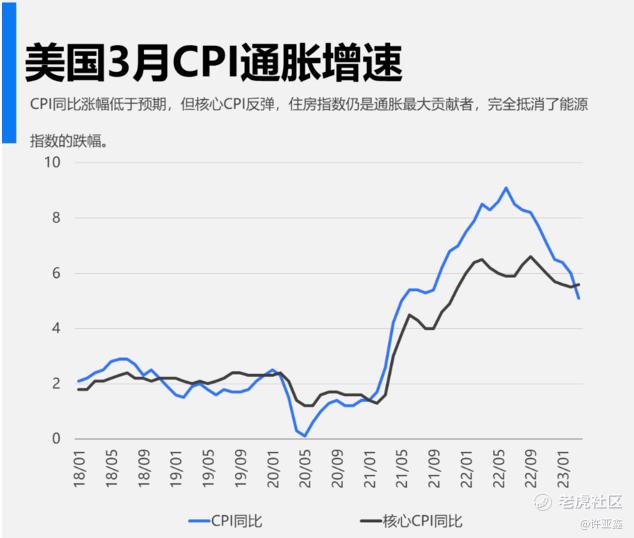
According to the U.S. Department of Labor,The housing index remains the biggest contributor to the monthly growth of all projects. This completely offset the decline in the energy index.
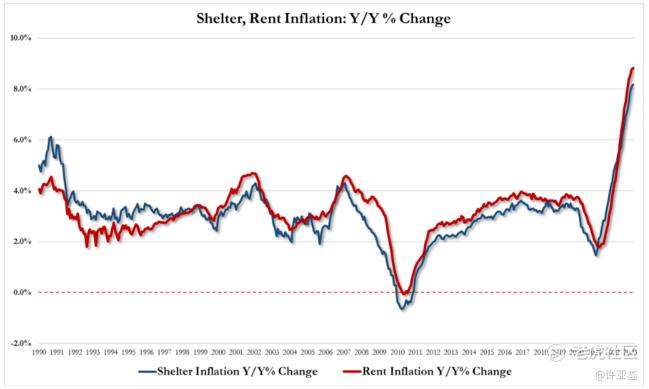
The energy index fell by 3.5% during the month, as all major energy component indexes declined.
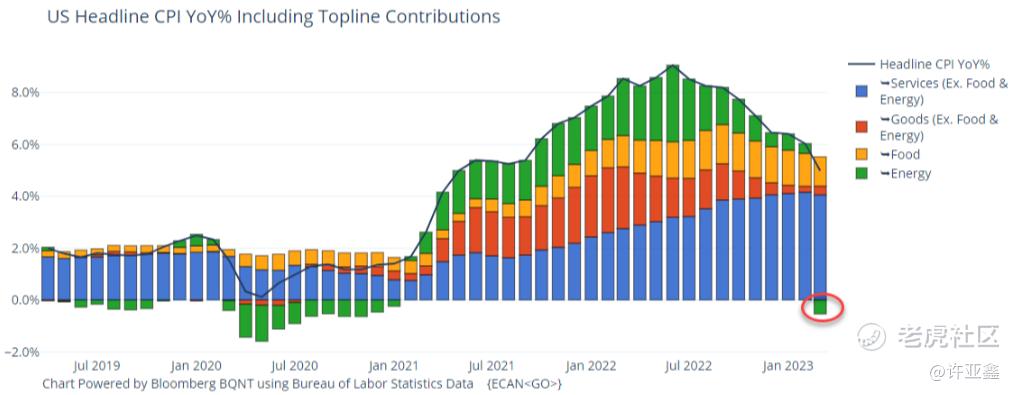
I believes that,Inflation in March was lower than expected year-on-year and month-on-month, which reduced the pressure on the Fed to continue its rate hike in May. The "super core inflation" that the Federal Reserve focuses on, that is, the CPI of core services except housing, slowed down to 5.73% year-on-year, the lowest level since July 2022. Such inflation data is conducive to the rise of US stocks, and also pushes the the US Dollar Index to continue to decline in the short term, and drives gold, silver and oil to rise.
As shown in the US Dollar Index's daily K-line chart below, although short-term technical indicators are oversold to a certain extent, it is expected that the support of February 2 low of 100.79 will need to be retested in the next few trading days.
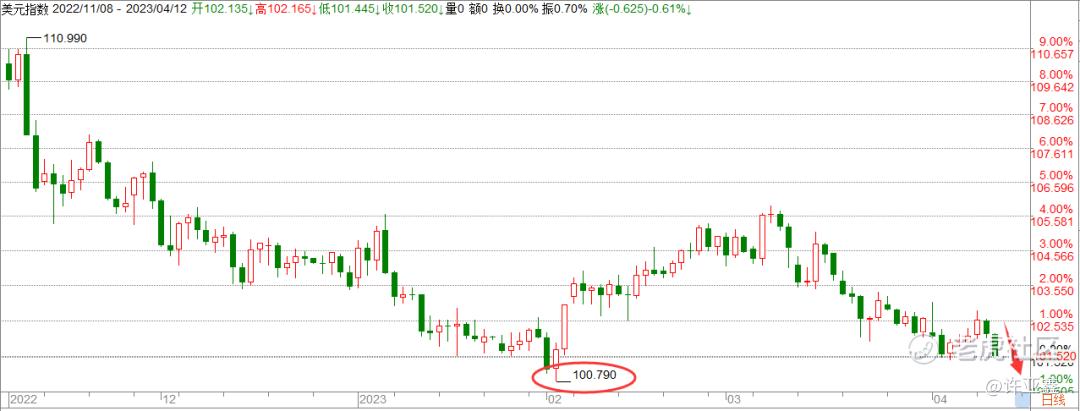
Of course, I still prefer that the Fed will choose rate hike at 25 basis points again at the interest rate meeting in May. After all, it is still far from the Fed's medium-term inflation target of 2%. If you can choose to continue cutting leeks in rate hike, how can you stop?
Williams, chairman of the New York Federal Reserve, who has permanent voting rights, also said,The Fed's outlook in March was to rate hike again this year, and then keep interest rates unchanged.This is a "reasonable starting point", although the final path will depend on the performance of economic data next.
You said that during the fierce rate hike cycle of the Federal Reserve from last year to this year, the US Dollar Index's performance was still the same. Once the Federal Reserve really changed its monetary policy in the future, what will happen to the US Dollar Index?
According to the latest IMF data, the share of the US dollar as a global reserve currency dropped to 58.4% at the end of the fourth quarter of 2022,This is the lowest level since 1994.
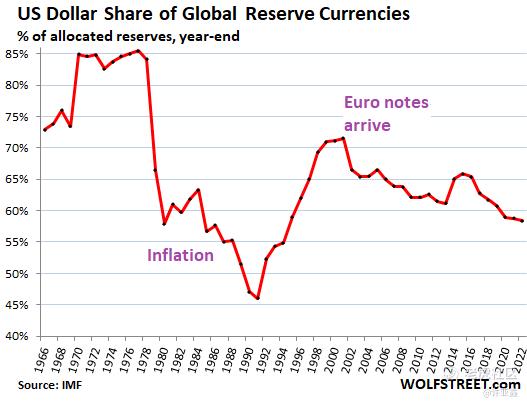
Back in 1978, as inflation erupted, the dollar's share of global reserves began to plummet from around 85 percent. By the 1980s, while inflation began to fall, it took central banks a long time to regain confidence in the dollar, whose share of the reserve currency did not bottom out until 1991, falling to 46 percent. Then the dollar share rebounded until the euro appeared and the dollar share declined again.
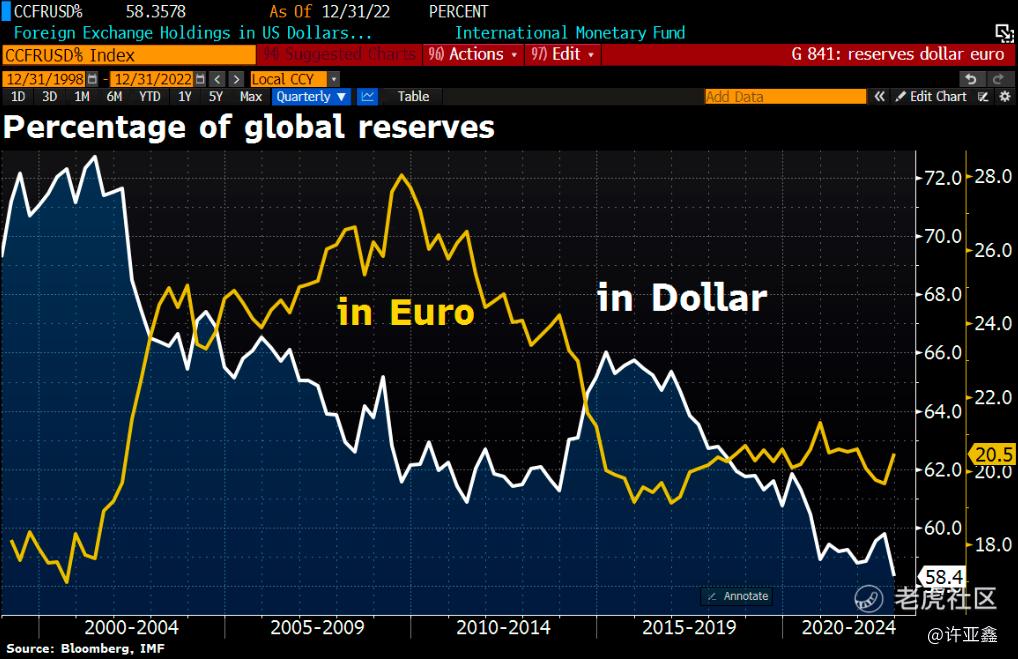
In addition, the trade financing data of Swift, an international payment and financing platform, shows that the market share of RMB has increased from less than 2% in February 2022 to 4.5% at present, approaching the euro with a share of 6%. However, both still account for only a small part of the dollar share. In February 2023, the US dollar share dropped from 86.8% a year ago to 84.3% at present.
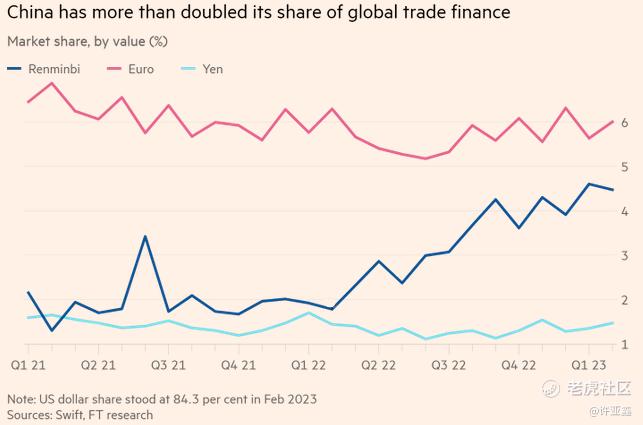
Therefore, the road of global de-dollarization is long and long, and the line will come. If you do not fix it, the future can be expected.
$E-mini Dow Jones - main 2306(YMmain)$ $E-mini S&P 500 - main 2306(ESmain)$ $E-mini Nasdaq 100 - main 2306(NQmain)$ $Gold - main 2306(GCmain)$ $WTI Crude Oil - main 2305(CLmain)$
Comments
Great ariticle, would you like to share it?